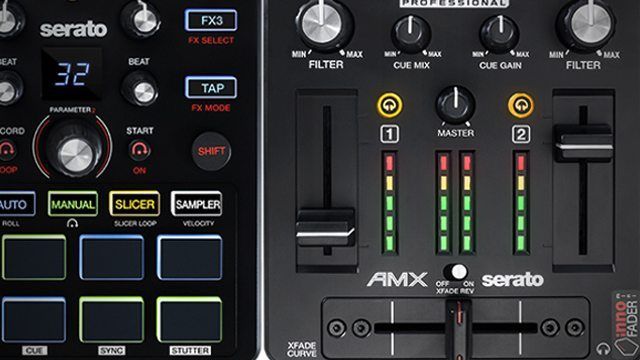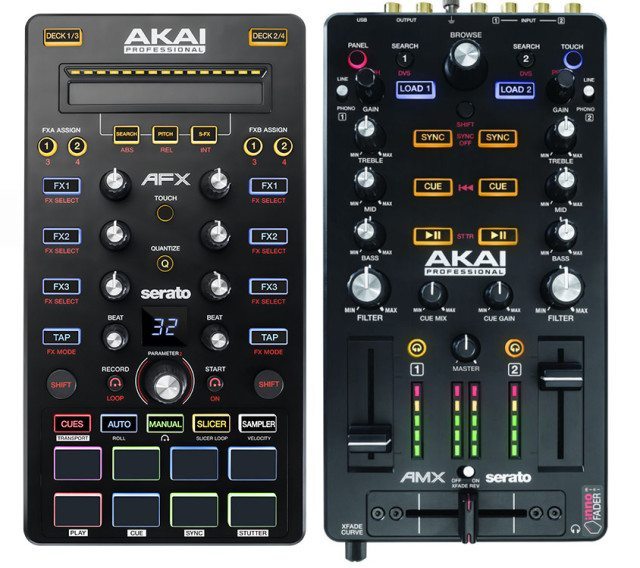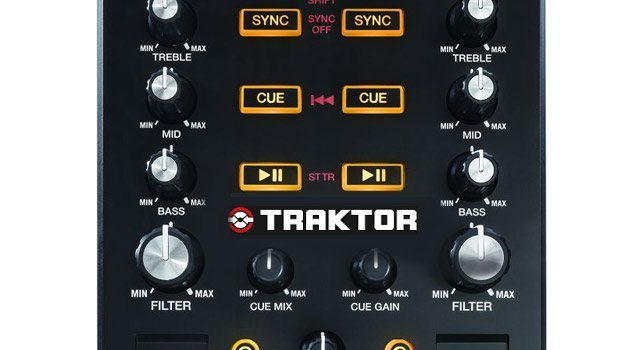The ecosystem of Serato products has expanded massively in recent years, with native control solutions appearing from many manufacturers. The latest company to step into the Serato world is Akai, with their new AMX and AFX units. But do they bring anything new to the table? We tested them to find out.
AKAI AMX BREAKDOWN:
- Price + Availability: $249 – preorders available in the DJTT store, releasing later this month
- The Good: Full two channel mixer with switchable phono/line inputs for DVS
- The Bad: No external power means that master output levels might fall short in some setups
- The Bottom Line: A powerful portable mixer solution that will be a strong addition to many Serato DJs’ arsenal
AKAI AFX BREAKDOWN:
- Price + Availability: $199 – shipping now from the DJTT store, released November 1st
- The Good: Wide array of touch-sensitive knobs and buttons give extensive add-on controls
- The Bad: Missing a “platter emulation” mode to move the playhead on tracks around
- The Bottom Line: Probably the best native control for all of Serato’s secondary features (FX, Flip, loops)
Saying Akai is a new brand to Serato is, of course, both true and false. While the Akai name hasn’t been attached to Serato native kit before, Akai is just one of the many brands in the formidable inMusic stable. That means the AMX and AFX owe design and technology debts to earlier products from, in particular, stablemate Numark.
The reasoning for the use of the Akai branding here is not entirely clear – these would sit quite happily in the Numark range – what’s probably more important is the Serato branding that also appears on both devices. The AMX and AFX were designed in tight collaboration with everyone’s favourite New Zealanders, and that integration is fully apparent in use.
Watch the full review video – and then keep scrolling for additional words on both controllers.
AMX: MIDI MIXER AND SERATO SOUNDCARD
Spoiler alert: Whilst the AFX is a cool bit of kit, the AMX is the headline act here. It’s really something unusual in the Serato lineup, with the potential to shake things up big time.
The AMX is, in essence, a two-channel mixer, although it must be noted that it isn’t a true mixer in the ‘standalone’ sense. It needs Serato DJ to work – there’s no mains power option, just USB, and must be hooked up to the software to do anything at all. It’s really a controller for Serato DJ’s internal mixing engine, and basically useless without it.
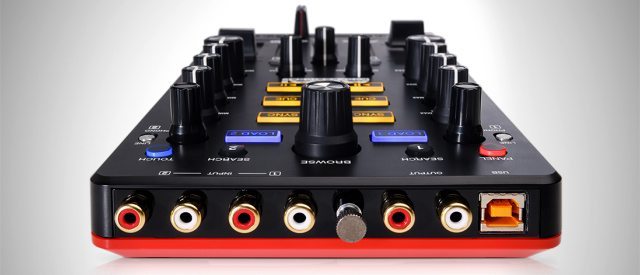
When it is hooked up though, it offers a heck of a lot. You’ve got switchable line/phono inputs for the two channels, providing full DVS control with turntables or CDJs. There’s an Innofader Mini (a favourite here at DJTT), full kill Eqs with touch control, and a combo filter on each channel, which borrows the great filter roll feature in touch mode from the Numark NS7 II).
You’ve got a browse knob, panel button and load buttons for library wrangling, plus a small set of controls for internal playback – play, temp cue, and sync. You can adjust the tempo of each track using shift plus the gain knobs, and search through tracks very precisely using the search and browse knob in combination. You can place either virtual deck in SDJ into ‘through’ mode, and play your regular vinyl or CDs through the unit, too.
That is a LOT of functionality, and seems even more impressive when you consider the price – $250. Depending on your needs, you could require the DVS plugin for the software too, but that still only brings you to $350 all-in. Consider that against the previous cheapest option for a Serato DJ DVS setup – the Rane SL2 interface at $500 (street), which has no mixing or control capability, and the AMX really looks like a steal.
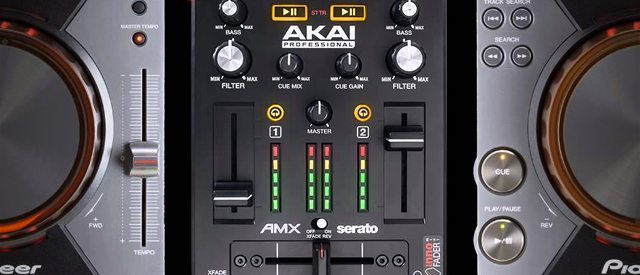
It’s not perfect, of course (nothing is!). The gain controls double up as the pitch adjusters, which means they are necessarily endless rotary knobs, which provide no visual feedback as to gain position. That, combined with the 5-segment VU meters, makes gain pre-setting largely a matter of guesswork in a loud environment.
And speaking of ‘loud’, that’s one thing the AMX can’t be accused of being. Thanks to its lack of a mains power option, like the Novation Twitch before it, the AMX just doesn’t match up to the healthy output level of something like a CDJ or SL box. If you play on systems where the overall gain-structure is not ideal, you could find yourself running out of gain on the house mixer well before you’d like.
The resolution on those pitch adjustments leaves something to be desired, too. Offering a resolution of just 0.3% up or down, if you don’t want to use sync, you’ll struggle to set precise BPM values with them. Also, Serato DJ really needs an option to ‘reset deck controls on load’ like Traktor. As it is, when playing a set without sync, you’ll spend far too long during your set manually adjusting the bpm back to zero after loading. Akai have assured us that both of these are software issues, though (the pitch knob can handle tighter resolution), so hopefully Serato can get on the case.

Sound quality is good, though, and the build quality, although full-on plastic, feels made to last – the pots all feel rock-solid, for example. The low-profile design means you’ll probably want something to raise both units up to deck/mixer height, and Akai’s own forthcoming case/stand should fulfil that brief, though we haven’t had one to test yet.
The potential use-cases for this thing keep occurring to you, the longer you spend with it. Need a portable controller/interface for testing out mixes on the road? AMX. Want a super-compact easy to set-up DVS system for practicing at home? AMX. Work at venues where the house mixer is ‘less than desirable’? Plug in an AMX to it.
Ultimately, the success of the AMX is down to this – it is a Serato DJ setup, with DVS, for $350 all-in. That’s a pretty astonishing feat, and truly unprecedented. I think it will rapidly make appearances in the kit list of many serious Serato DVS users, either as a travelling or back-up option, and serve as an ideal introduction to DVS for beginners.
Plus, of course, there will be the users who will be looking for a $250 internal mixing solution to go with their….
AKAI AFX: SERATO EFFECTS, CUES, FLIP
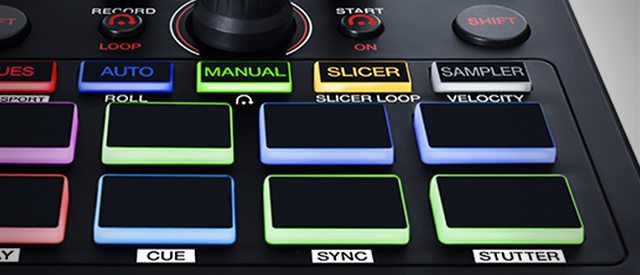
The AFX is the latest in the line of ‘add-on’ controllers for Serato software, which began with the venerable HC-1000S from Denon (also now an inMusic brand, the circle of life, etc.) and has since expanded to include offerings from Reloop, Novation, and Pioneer. As a native controller, it’s automatically mapped to the software, and includes a plethora of controls to give you access to most of the features in Serato DJ.
It handles up to four decks, depending on which interface you’re using it with – the buttons at the top do the switching, to determine which deck the pads and touchstrip are controlling.
In the middle of the unit is the standard SDJ effects control setup – four knobs, four buttons. Like the AMX, these are touch enabled, which allows you to stab FX in and out with ease.
The pad section is fully comprehensive, too, again following the SDJ standards, with cues, looping, rolls, slicer, and the SP6 sampler all present and correct. Thanks to the compact size of the unit, the pads are small, but big enough that you won’t mis-press, and have full RGB lighting. They’ve even included a secondary cues mode which offers transport controls, for internal playback modes. Great.
Dedicated Flip controls sit either side of the central loop knob, and make recording your own Flips very simple and intuitive. The unit comes with a licence for the Flip plug-in included, which is a nice touch.
Above that loop knob is a 2-digit LED display of your currently set loop length, and that is KILLER. With so many SDJ controllers, determining your loop length without looking at the screen is impossible, so having it right there on the controller is excellent.
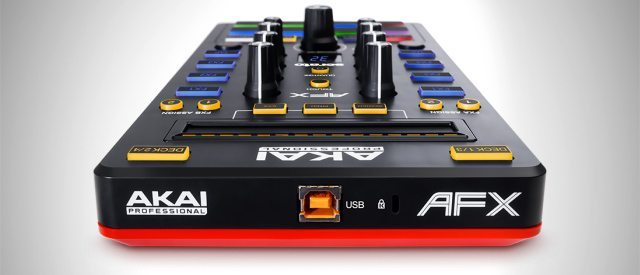
The touchstrip at the top of the AFX has three modes – Search, which moves the playhead through the track in large increments – Pitch, which offers smooth pitch bending up and down, and S-FX, which allows you to quickly adjust FX parameters up and down momentarily. That’s a cool feature, with definite possibility to open up some crazy new FX techniques.
So, as an add-on controller, the AFX is very successful. You might not be a fan of switching layers, so you might consider a pair, although then you’ll have 2 banks of redundant FX controls, which can’t be remapped. But if you’re happy with working with layers, then a single unit positioned between, say, a deck and your mixer, makes for a super fun, ,compact, comprehensive addition to your setup.
THIS IS NOT THE X1 I’M LOOKING FOR
At this point, the review gets personal. One of the reasons I started playing around with Traktor, after many years as a Serato user, was that the Twitch introduced me to a world beyond platters and jog wheels. And with the Kontrol X1 mk2, Native Instruments distilled that world into a modular device which has been my main means of control for many, many gigs, used either individually, or in a pair.
I’m no Traktor fanboy, though. I’m still equally into Serato DJ. Both platforms have their strengths and weaknesses, and so the option to have an equivalent setup in SDJ has been a dream for a while. When the AFX showed up, I hoped this would be it! The moment had come, I where I could use a single, or pair of AFXs, an SL box, and regular mixer…
…But it hasn’t. Yet.
As you can see in the video review, the touchstrip is missing the ‘platter emulation’ mode which makes the X1 mk2 and Twitch so usable. There’s simply no way to accurately move the playhead around. Also, crucially, there’s actually no way to adjust the bpm from the AFX. You can pitch bend, but that’s it.
There’s also an issue with Serato DJ itself which holds back this kind of setup too, in that with DVS hardware like SL boxes, Smart Sync is disabled. That makes platter-less playing way more of a hassle that it should be.
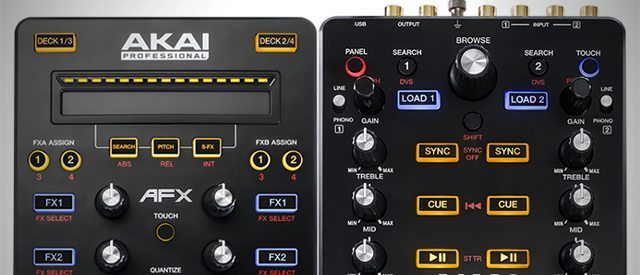
So, my SL box/external mixer dream is squashed, for now, at least. But, the saving grace is the AFX/AMX combo. At all the gigs I’ve done with these units, that’s all I used, with the AMX feeding into the house mixer, and the AFX hooked up for control. Now, THAT works great. You get the bpm adjustment and precise playhead movement on the AMX, and pitch bend on the AFX. Smart sync works with the DVS plugin disabled. It’s a superb combo, and has served me very well in a live situation. Hopefully software and firmware updates will enable my dream eventually, but in the meantime, the pairing of both does the job nicely.
HOLIDAY MUST-HAVE CONTROLLERS FOR SERATO DJS?
In all, there’s little of substance to complain about with the AMX and AFX, only fine details. When used as a pair, they’re a great setup, alone, or with DVS. The AMX is a total bargain for what you’re getting, and should certainly be on the holiday gift list for any Serato user, really. It’s a wonderfully handy piece of kit in many situations, and a potential ‘gig-saver’ in some.
The AFX, despite my disappointment in the couple of things it doesn’t do, actually performs extremely well within the parameters it was designed to. As an add-on controller for an existing Serato DJ system, it’s impossible to argue with its efficacy and value for money, at just $200. There’s no other native Serato DJ hardware which can match the amount of features on offer for that price.
If you have a space in your setup for either, or both, the AMX and AFX, you won’t be disappointed with what they’ve got to offer.
Support continued great content from DJTT – pick up these controllers in the DJTT webstore.
TRAKTOR AMX KONTROL?
We couldn’t help but notice that the AMX would make a very affordable all in one controller for those who want a highly portable dj setup. With some creative mapping you could take control of everything needed in a basic dj mix including looping, effects, eq, levels and more. With a good built in sound card and front headphone monitoring – this would be a great value at $250. If that sounds interesting to you, let us know in the comments so the DJTT experts can start to look into mappings!


